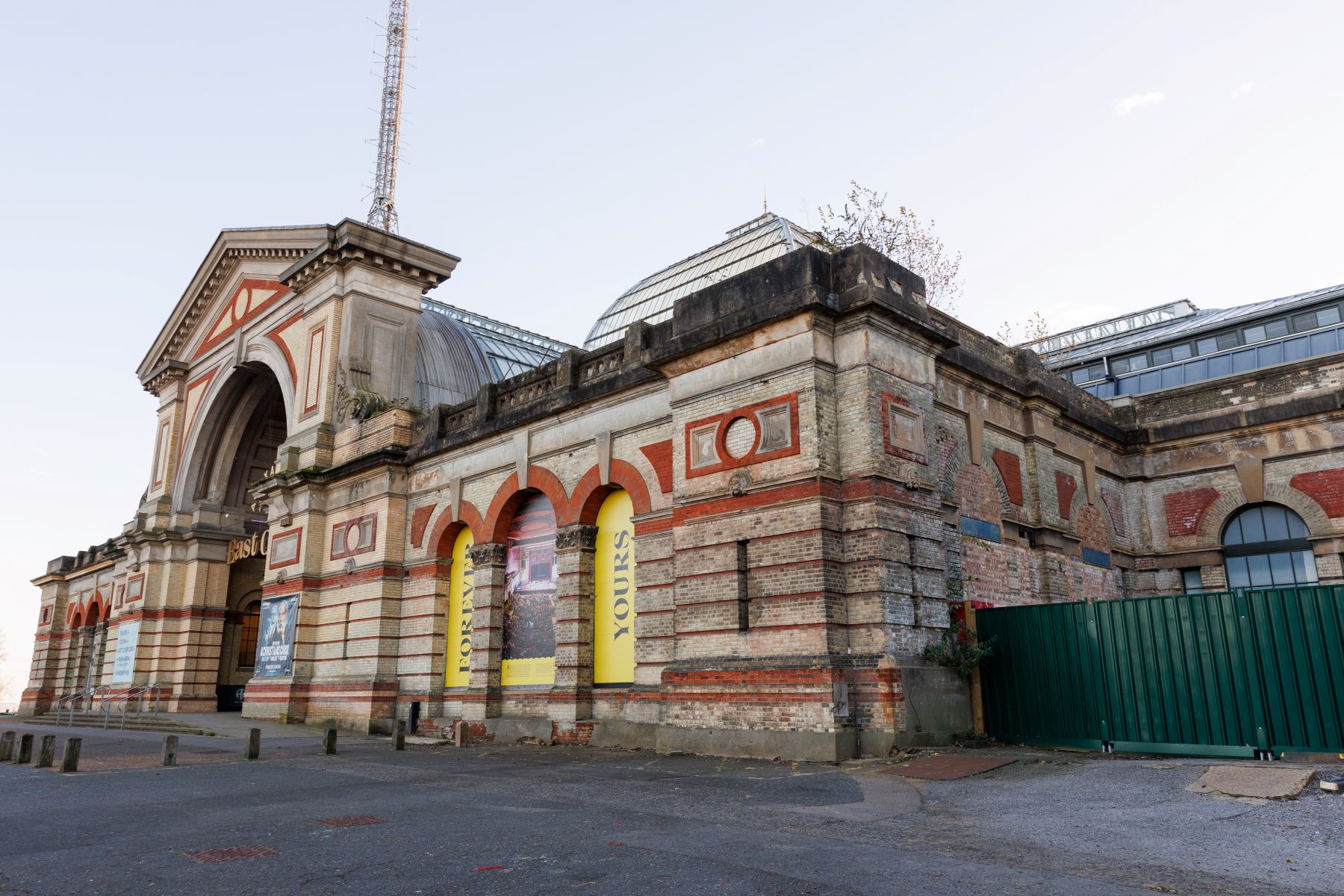Grant Awarded to Alexandra Palace to Help Restore Unique Spaces
Historic England has awarded a £550,312 grant to North London’s iconic Alexandra Palace to kickstart work to bring a derelict section of the Palace’s East Wing back into use.
This is the latest stage of the award-winning restoration of the Grade II listed Victorian venue, which is celebrating its 150th anniversary this year.
The funding will enable the Palace team to stabilise the North East Office Building, the last remaining truly inaccessible area in the 7 acre ‘People’s Palace’. The grant will also pave the way for feasibility work into how the space can be developed for public benefit for the first time in the Palace’s long history.
Alexandra Palace hosts over 400 events and activities each year, welcoming 5 million people to the Park and Palace. This grant marks the next phase of the major restoration project that saw the Palace’s Theatre reopen in 2018 following 80 years of closure, alongside the transformation of the East Court, thanks to funding from the National Lottery Heritage Fund and Haringey Council.
We are grateful to Historic England for such a significant grant in our 150th year. The funding will start us on the journey to bring these spaces back for public benefit, unlocking their potential and enabling us to welcome everyone through our doors with a wider range of activities and programmes. In doing so, we will build on our work to inspire people to be part of the future of this extraordinary People’s Palace.
The funding comes via Historic England's Heritage at Risk programme, which focuses on the risk faced by some of the most significant sites in England which, without grant support, are not able to pursue restoration projects.
This year marks the 25th anniversary of the publication of the first national Heritage at Risk Register. Since it began in 1998, thousands of buildings and historic sites have been rescued with the help and commitment of local people, communities, charities, owners and funders.
Historic England's expert advice, grant aid and creative thinking have also been key in delivering people's visions for how these historic places can be restored and used.
I’ve always loved Ally Pally and am delighted to hear that the 25th anniversary of our Heritage at Risk programme has coincided with the 150th anniversary of the Palace in such a fruitful way. I really appreciate the time and care taken by colleagues and partners across the country to support and save places like Alexandra Palace, which is one of our best-loved buildings.
Alexandra Palace opened in 1873, only to burn down 16 days later. It reopened in 1875, and in 1900, an Act of Parliament placed the Park and Palace in public ownership so that it could remain ‘a place of public resort and recreation’. The site suffered another devastating fire in 1980.
In recent years, the proportion of the Palace that remains out of use has been reduced from 40% to 29%. Restoration – and its associated benefits for visitors, the local community, the local economy and the Palace’s environmental footprint – is at the heart of the charity’s vision for the future.
Our funding for the North East Office Building is designed to address the most urgent repair work and act as a springboard to access further funding which will open up the area to the public for the first time. We have worked closely with the Trust for a number of years, helping to shape and secure the repair of the building. Alexandra Palace is a vast site full of unique and intriguing spaces and we’re pleased to be able to support this essential work, following a project development grant in 2020.
The Office Building was used as far back as 1875, to house the ‘offices of the administrators’, a ticket office, porter facilities, a costume room and the Palace’s First Superintendent. It was last used by the Open University production unit, which broadcast educational programmes from the Palace’s TV studios between 1971 and 1981.
The structural work, which includes removing decayed brickwork and timber, the removal and storing of historic roof lanterns, and installing a new roof covering, is due to commence in early December and is expected to take 4 months.





